How Can We Improve Math Test Review?
A MiddleWeb Blog
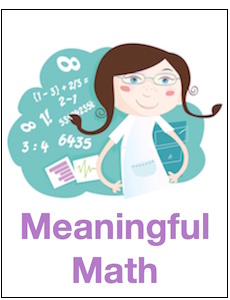
I have been incorporating more formative assessment, and I’ve been trying a variety of methods. Overall, I think the results have been positive.
Logically, working on formative assessment has led me to question some of my summative assessment practices too.
To review or not review?
To begin with, I am not sure I know the best way to prepare students for a test. At times, I feel like the valuable classroom minutes I spend reviewing for our class tests are mostly wasted.
I can’t help but wonder, with so many concepts to teach, would it be better to forego reviewing for the test? In fact, a fellow math teacher at my school has decided against spending a day on test review in favor of using those extra days to get to more new material.
“Gallery Walk” for test review
For the last test that I gave, I did provide a day to review. My students completed what I call a gallery walk. There were math problems posted on chart paper around the room that I taped on my whiteboards. Students were put in groups of three, and they walked around the room and worked through each problem together.
Students actually worked the problems on the whiteboard and then erased their work before they rotated to the next problem. I provided students with paper and clipboards if they wanted to make notes along the way.
As the students worked the problems, I walked around the room observing and providing hints and suggestions. Some groups wanted me to look at their work before they moved on to see if their answer was correct, but most students were content to reach a consensus within their group.
As students left the room for the day, I provided them with a written copy of the problems (with worked out solutions) so that I could be sure that they had a complete guide to study.
What did the students think of the “Gallery Walk” test review?
After the students took the test, I asked them to fill out a survey discussing the effectiveness of our review strategy and to provide suggestions for future test review. The majority of students stated that the review was helpful in preparing for the test.
Many of the students remarked that it was working with other students that helped them the most. One student said that it helped to have “a group of people that could explain it to me in a way that I could understand.” Another student said that “I liked that I could realize if I didn’t understand something.”
However, some students shared that they did not enjoy “group work for studying.” One student said that it was not helpful because only one person in their group could answer the question and that if you didn’t understand the problem, “you were stuck.”
Another student mentioned feeling rushed and I can’t disagree. Our class periods only last about 50 minutes and it’s very challenging to fit it all in. Another student said that it would have been better if they could have seen the correct answer before moving to the next problem.
Areas for improvement
I noticed that, within the groups of three, one member usually took the lead writing the problem and working it out on the whiteboard. However, many times the students that weren’t writing were coaching or critiquing the work that was being done which produced some good math conversations.
Even so, if I do this again I will stipulate that group members take turns with the dry erase marker, perhaps giving each member a different color marker, and that way I can color code each problem so that students will remember to take turns when working out the problems.
Also, I need to think of a way to let the students see the correct answer before they move to the next station but not before they have had a chance to work on the problem.
In addition, this activity needs a conclusion. The students did have time to cycle through all the problems in our gallery walk, but there was not time for a wrap up or debrief session. Also, students were not given an opportunity for any meaningful reflection.
Other types of test review
I realize that this is not a particularly exciting or “fancy” way to review for a test. I have tried many other review strategies. At times I have had students create their own test, based on our material, and that has yielded good results. However, I generally like to build up to that level of autonomy, and at this point in the school year my students still need help knowing how and what to study.
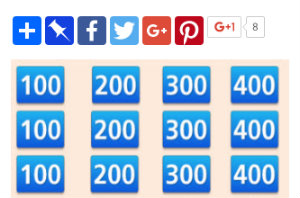
I know for a fact that students do enjoy review games and become engaged in competing with their classmates. In fact, last week one student suggested that we should play a game such as Kahoot with candy as the prize. I will probably review this way again.
However, many times I feel that the students remember more about the game than the content (concepts) I’m trying to reinforce. I prefer to use Kahoot! and similar games for formative assessment as opposed to test review. I also have been thinking about using Kahoot! after students take the test to reinforce questions that the majority of students may have missed.
In math, I have found that Kahoot! works better for problems dealing with concepts or shorter answers.
What’s next?
So, I will continue to try to improve how I prepare my students for a test. I have learned any review which requires students to be the active participants trumps me working the problems on the board with the students just watching.
If you are interested in doing a gallery walk for test review, this is a great resource from Jennifer Findley that I found while looking around for ideas to help me improve!

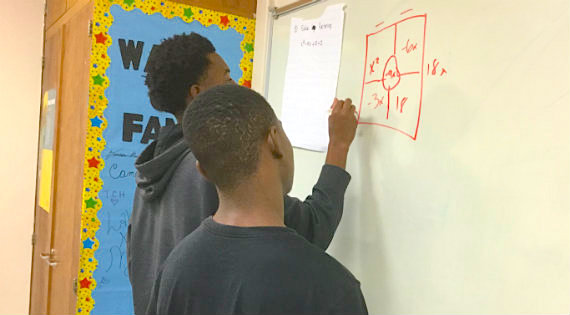
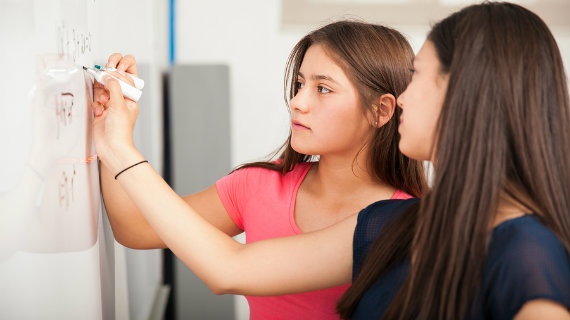
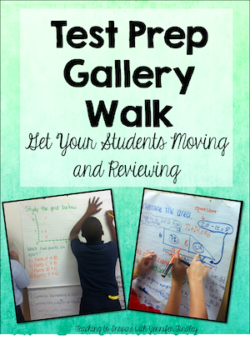



































I like this idea. QR codes next to each problem would be a great way for students to get the solution before moving on.
Thank you so much! That is a great idea! I’m going to try it this week!
Please share activities for 4th to 6th grades mathematics. I am looking for such ideas which students can engage more in my math class…Thank you
Write the answers on the back of the chart paper or on a card that they can flip up to check if the answer they got is correct! I’ve done that and it works well.
Thank you! I will definitely try that! Do you have trouble with the students looking at the answer before they try the problem themselves?
I sometimes put students in groups, present a problem on the board and then have some of the student groups go to the board while the others work at their desks. Once all the groups on the board are done, we look at each group’s board work, finding where they went wrong. This helps ferret out errors before the test. Then I present another problem and send some other groups up to the board and repeat the process. I have found that this usually brings the test scores up by a full grade point. Seeking out all the wrong thinking that students have before the test helps a lot.
Thank you! That is a great idea! I agree, getting at students’ wrong thinking is critical. Also, it seems like this would produce some really good math discussion. I can’t wait to try this!
I have a scavenger hunt (similar to a gallery walk). The answer to the question tells the students which problem go to next. If they have missed the problem, they come ask for help. I also let them choose if they want to work with other students or on their own. It seems to be a great review for all except my lowest students.
Scavenger Hunt! That’s a great way to let students know if they worked the problem correctly! I haven’t thought about that as a way to review for a test. I also like that you let students choose whether to work with others or on their own. I do that too sometimes. Thank you!!
I have also had students write their work at the bottom of butcher paper and then roll it up and tape it for the next group to work. At the end unroll the paper and reflect on the common errors they might see and/or the different solution methods that there are. It has been a very effective way to end the review and give students time to reflect.
I really like this idea, and I have butcher paper in my supply closet! I’m doing a test review today, I’m going to try it! Thank you!!
This is awesome! I am actually searching for a new way of reviewing the students!! So timely!!
Thank you for your comment! I have received so many good tips from the comments, I’m excited for my next test review!
If you’re already providing an answer key to the problems after the fact, why not have it on their clipboards as they go around the room? If you go with your color coded idea, maybe each color could have a task at each station (i.e. in a group of three – one works the problem, one is the “coach”, and one is the expert, checking work against the key). There’d be more engagement in groups because everyone has a task and it might be nice for students less confident in the material to have that expert role with support from the material you’ve provided.
That is a good idea! I think I hesitated to give students the answers ahead of time because I was afraid they wouldn’t try to work the problem themselves. However,like you said if everyone had a role (task) that would encourage the students to participate. I also like what you said about supporting students who are less confident, which is important because students who may be struggling often don’t get the full benefit from these type of activities. Thank you!
Did you notice whether or not the students had a better understanding of the material after doing the Gallery Walk? I think the idea is good and sounds like fun. I LOVE that you provided the same questions with completed answers at the end of class. I work with students that are struggling to pass math and having the answers is a great help for them.
I do think they had a better understanding. From what the students put on the survey after the gallery walk they felt the gallery walk helped them uncover what they didn’t know. Also, they liked getting their explanation from another student. I think that when students just watch me work problems on the board, they don’t know what they don’t know. Thanks for your comment!
I, like you, try to spice up test review. Last year, I distributed a mock test and had students circle questions that they didn’t know (“IDK”) how to do. That evening, I created pairs (aka study buddies) where one student knew how to do questions the other didn’t. The next day, they were assigned their partners and worked side-by-side on the questions they didn’t know how to do. If they encountered a problem, they had to consult with another pair before asking me. There were some students who needed a little help before they were ready to help a classmate so I helped them with those specific questions. It was a teacher’s dream to see and hear all the math explaining going on. On test day, students were less stressed and better prepared.
Michelle, Similar to another reply you received, I like to use a Scavenger Hunt activity. However, I write the answer to one problem on the top of a different problem. An example : The students work out problem/question #1 on their blank work paper. They ‘hunt’ for their answer on every other problem sign and find it on problem #5. This means they are correct. They now solve problem #5 and search for the answer on another problem sign. I use 8-12 different problems that create a loop. If they solve all questions correctly, they will circle back to the first problem they solved. Everyone can start on any problem, and still make the loop.